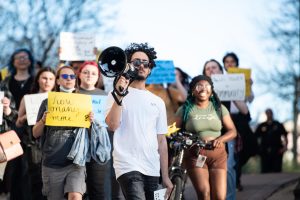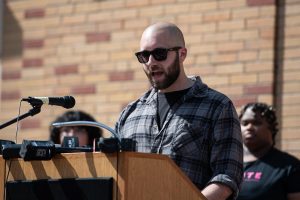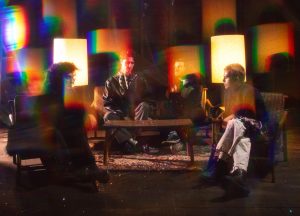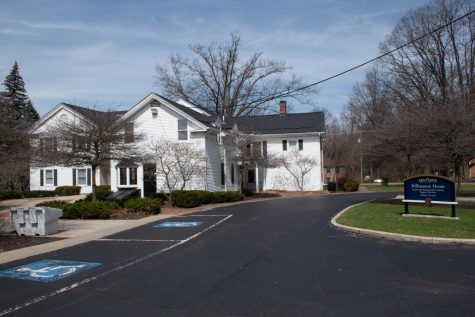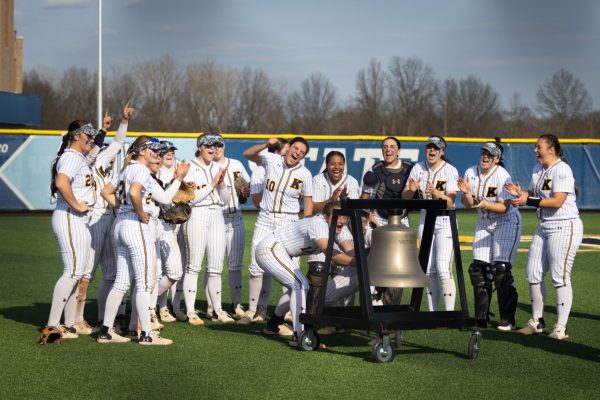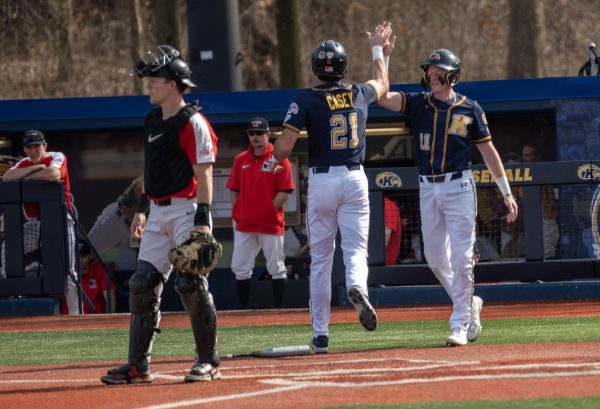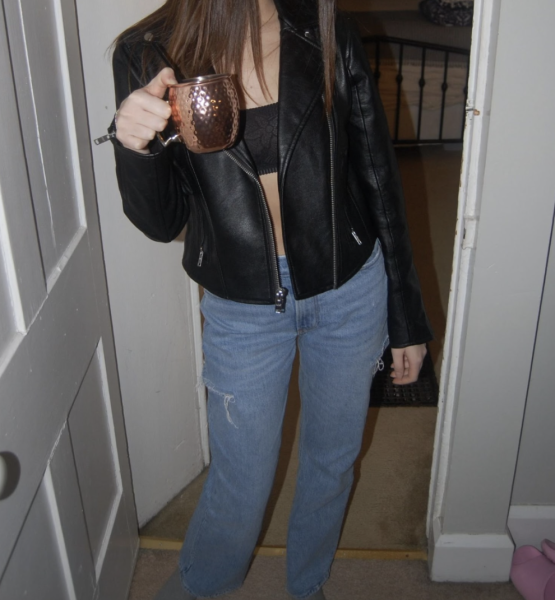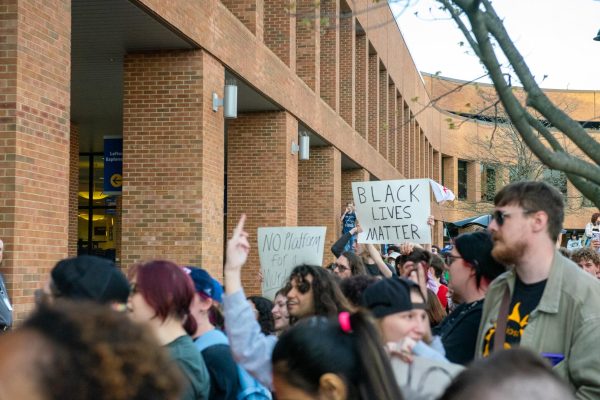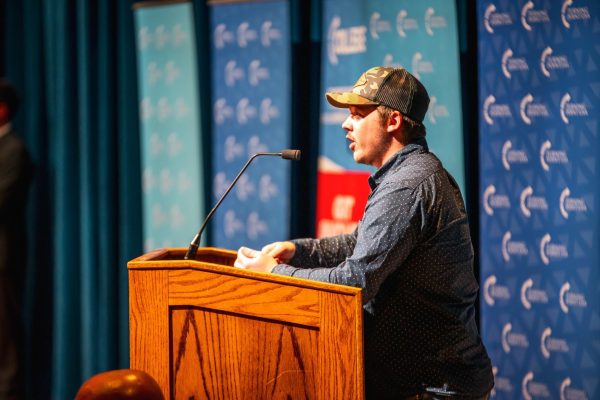Flamenco dancers bring rhythm, lessons to Ballroom
March 26, 2008
La Romera demonstrated different Flamenco dances and explained the development of the style from its roots in 13th century persecution of Jews and Gypsies in Spain for not converting to Christianity. DANIEL DOHERTY | DAILY KENT STATER
Credit: DKS Editors
The audience’s shouts of “Ole!” met Spanish guitars and the rhythmic pounding of heels in the ballroom as flamenco dance instructor and performer La Romera gracefully danced across the wooden stage.
La Romera kept the audience of about 250 people entertained last night when she gave a lecture demonstration of flamenco.
She performed three dances throughout the night, the first of which was with another flamenco dancer, Saundra Bohl.
La Romera danced alone for the two other performances.
Flamenco has only become popular worldwide within the past 30 years. The art form, however, is much older.
It originated in the 1400s from the cries of the people persecuted for not converting to Christianity, mainly the Jews and the Gypsies.
La Romera got involved in flamenco in 1969 when the Spanish dictator Francisco Franco was in power. After his death in 1975, Spain became more westernized and La Romera said flamenco has become a very different art form.
“After the death of Franco, people wanted to become more experimental,” she said.
Musicians started fusing flamenco with jazz, rock and many other types of music, and experimenting with dress.
“On stages now you will see women wearing very masculine outfits and men wearing skirts,” she said.
La Romera said she thinks the pure art of flamenco has been diluted.
“I was fortunate to see some really pure flamenco before it took onto the world stage as it is today,” she said.
Pure traditional flamenco, she said, is very emotional, and can even be described as a spiritual experience.
“It can rip your heart out,” she said. “What has happened now with a lot of the experimental aspects of flamenco is the deep tragic song now sounds like cool jazz. It’s not the same thing.”
One of the musical groups that made flamenco popular is the Gipsy Kings.
Heads bobbed and feet tapped as the guitar players performed their rendition of the group’s popular song “Bandolero.”
About 40 audience members joined La Romera on stage at the end of the night to learn some flamenco steps.
Jackie Barath, sophomore speech pathology major, said she didn’t know anything about flamenco before last night, and she said she thoroughly enjoyed the presentation.
“I’m inspired to take classes and dance like that” she said as she tapped her feet in imitation of La Romera. “I’ll probably go home and practice.”
Beth Diederich has seen authentic flamenco dancers perform in the past and said La Romera’s performance was very accurate.
“Everything was the same, just not as many people,” Diederich, a sophomore Spanish major, said.
La Romera has been teaching and performing flamenco for 36 years. She spent more than nine years in Spain living with the Gypsies and learning and performing the dance.
She moved to the Pacific Northwest and taught and performed to standing ovations all across the United States. La Romera moved to the Cleveland area a little more than a year ago.
The audience members received feedback sheets which were returned at the end of the presentation.
La Romera said she would like to come to Kent State and teach if the feedback shows there is an interest.
Contact College of Arts and Sciences reporter Anna Duszkiewicz at [email protected].







